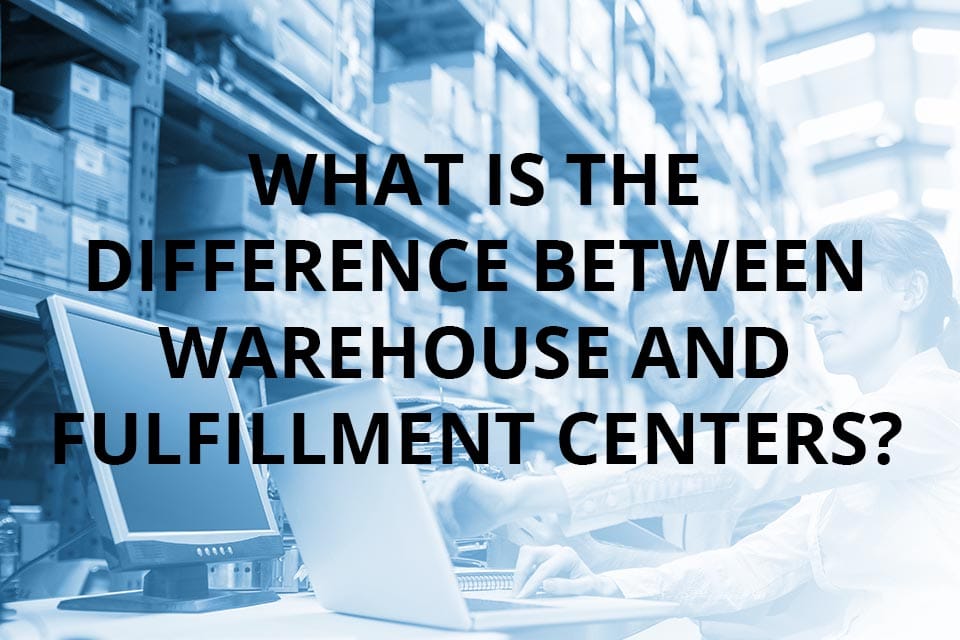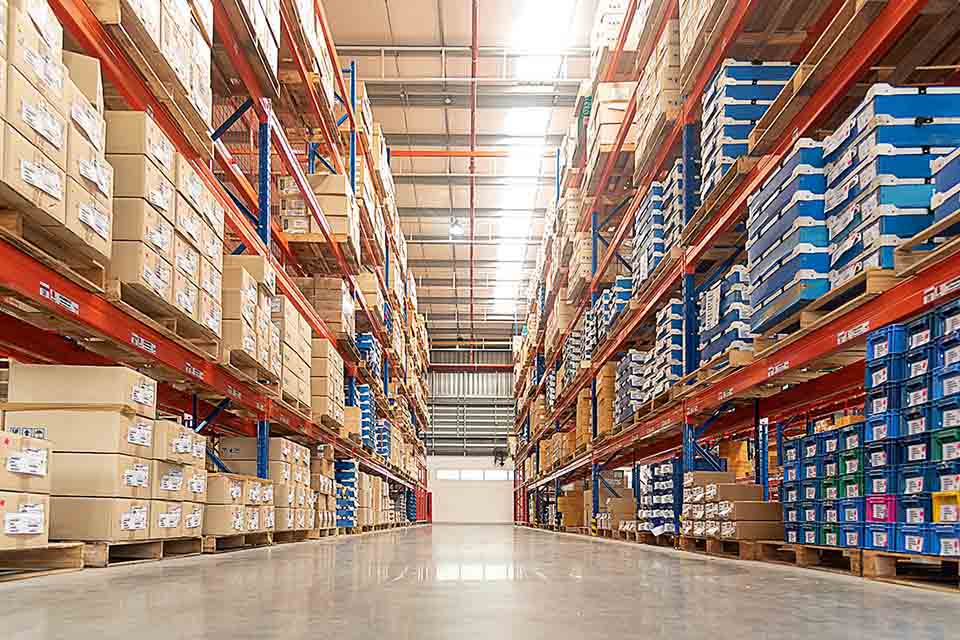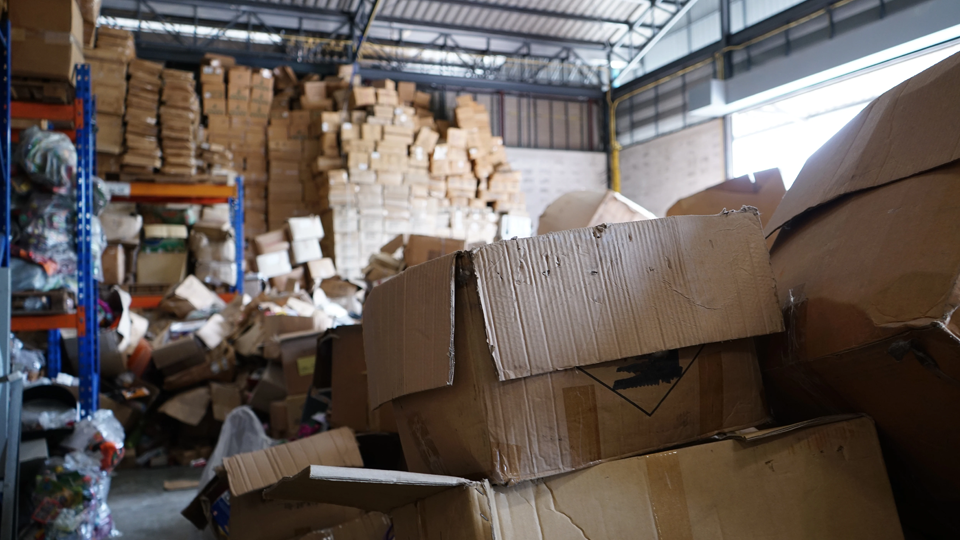What Is the Difference Between Warehouse and Fulfillment Centers?

By using a warehouse or a fulfillment center, companies can continue production throughout the year and make timely deliveries of goods to customers. Both are considered a convenient, cost-effective way to organize inventory, mitigate risk, and even reduce employee theft.
However, the differences between a “warehouse” versus a “fulfillment center” are commonly misunderstood. The terms are often used interchangeably, as their service and purposes seem similar or even overlap. Yet, understanding these differences can help a business achieve its long-term goals.
What Are Warehouses?
A warehouse is a building that stores goods or products for an extended period until they are needed. Businesses may use a warehouse to store seasonal merchandise or products that are often sold in bulk, such as non-perishable food. A warehouse can also be used to store items or goods that require specific environments or procedures to maintain, such as refrigeration or a certain air pressure.
Warehouses are typically large buildings found in industrial parks on the outskirts of cities. There are various available types, such as private, public, automated-operated, and climate-controlled warehouses. Additionally, a warehouse could be owned by one organization or leased to multiple organizations. A warehouse is a popular choice for smaller or mid-sized companies that may not have enough space in their building to store all their inventory. It may be an ideal solution in business-to-business (B2B) sales, too.
In summary, a warehouse is defined by the following characteristics:
- Offers long-term storage
- Handles fewer buyers (mostly B2B sales)
- Owned by one or leased to multiple organizations
Related: Help! I’m Outgrowing My Warehouse
What Are Fulfillment Centers?
A fulfillment center is also a building that stores goods or products in bulk. They can look similar to warehouses and be positioned on the outskirts of town like a warehouse as well.
However, fulfillment centers are more commonly known for being third-party logistics (3PL) providers. A 3PL provider means that the center functions like a “middleman” between provider and buyer. A buyer may include retailers, e-commerce, and corporations. It could entail orders between B2B or a business-to-company (B2C). Its ultimate purpose, though, is to locate and ship out an order as soon as it’s filled.
In short, a fulfillment center:
- Offers short storage time (about a month)
- Can have multiple buyers (B2B, B2C, etc.)
- Owned by one company, rather than multiple businesses
Related: What is Order Fulfillment and How Does it Work?
What are the Differences Between Warehousing and Fulfillment Centers?
The major difference between a warehouse and a fulfillment center is the amount of time that each holds onto a product or item. A warehouse is used for long-term storage. It will typically hold onto bulk items anywhere from a few months to years. It typically utilizes forklifts and large containers to transport and stack items.
Meanwhile, a fulfillment center is used for short-term storage—about a month at most. It may hold a large quantity of products or goods, but the center’s ultimate purpose is to complete an order as soon as it’s made. This may mean shipping out bulk items, or small orders, such as online orders done in clothing stores or digital food markets. As a result, these centers are less concerned with maintaining specific temperatures or environments to store products, as many of their items aren’t meant for long-term storage.
A warehouse may provide a fulfillment center with a product or item to complete and send out an order. But, a fulfillment center couldn’t do the same with a warehouse; a fulfillment center is usually that “middleman” between the warehouse and the customer. For this reason, a fulfillment center may have a variety of different external customers and a warehouse may have fewer or merely one.
Why Using a Fulfillment Center is Better for Your Business?
Deciding what is best for your company primarily depends on your products or items, their storage requirements, and the size of your company. A small or medium-sized business may have a quick turnaround and spend much of their day packaging and shipping orders. Using a fulfillment center could minimize or outsource that work, allowing companies to invest more time in building new ideas or connections.
As online shopping and small businesses become more ubiquitous, fulfillment centers are gaining popularity. Still, a warehouse may be a more feasible solution for larger companies or businesses that simply need more space. Whichever you choose can help to streamline the relationship between business and customer or business to business. It can ultimately serve as a successful method for managing your products and securing your business’s future.
Looking for a trusted 3PL to handle your Order Fulfillment services? At Ship My Orders, we have an on-site customer service team, always ready to address your inquiries promptly. With precision, speed, and real-time responsiveness, we ensure you get the best experience possible. Request a quote today!
Need help with eCommerce fulfillment for your business?![]()
FAQs
Q: What is the difference between fulfillment and shipping?
Fulfillment involves processing orders, picking, packing, and preparing items for shipment. Shipping is the physical transportation of those items to customers.
Q: Is fulfillment the same as logistics?
Fulfillment and logistics are related but not the same. Fulfillment primarily involves processing orders, picking, packing, and preparing items for customer shipment. On the other hand, logistics has a broader range of activities, including transportation, warehousing, inventory management, and distribution.
Q: What is the difference between logistics and warehouse?
Logistics covers everything from getting goods to customers to managing inventory. A warehouse is just a place to store stuff.


-1.png)


